Abstract
The transient orientation of lambda DNA and lambda-DNA oligomers has been measured during pulsed field gel electrophoresis. The DNA becomes substantially aligned parallel to the electric field E. In response to a single rectangular pulse, orientation shows an overshoot with a peak at 1 second, then a small undershoot, and finally a plateau. When the field is turned off, the orientation dissipates in two distinct exponential phases. Field inversion leads to periods of orientation with intervening periods of reduced orientation as the chains reverse direction. Field inversion pulses applied to linear oligomers of lambda-DNA show that orientation responses slow down but increase in amplitude as molecular weight increases, for a given field. Because DNA stretching and alignment parallel to E are expected to correlate with DNA velocity, the velocity in response to a pulsed field is also expected to exhibit an overshoot.
Full text
PDF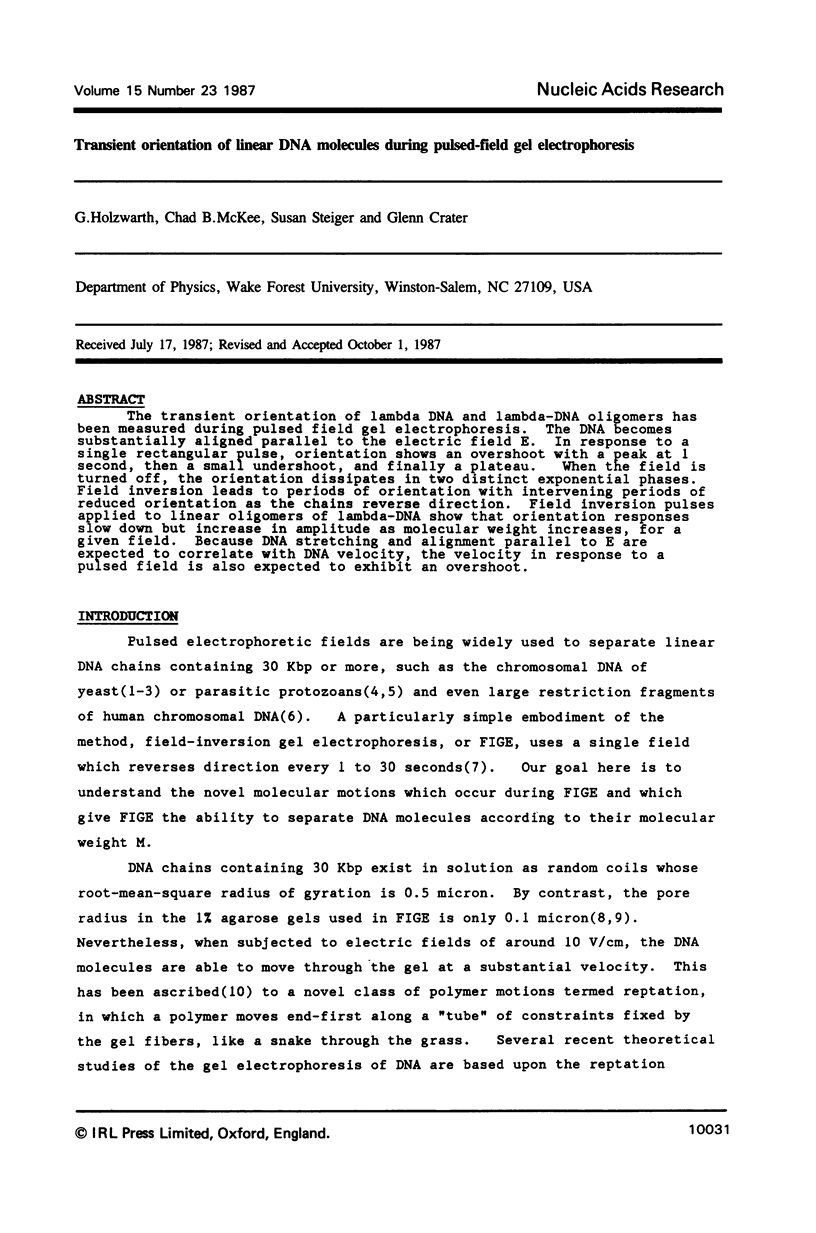
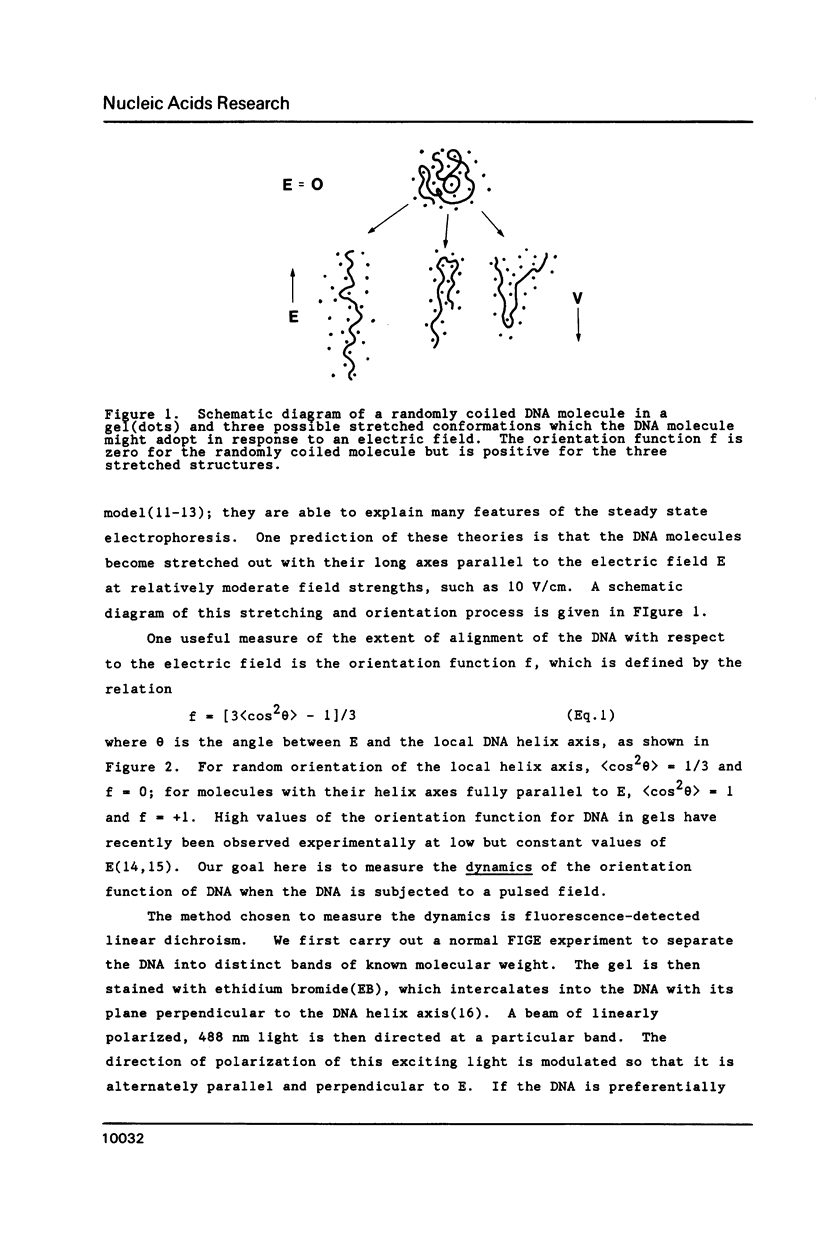
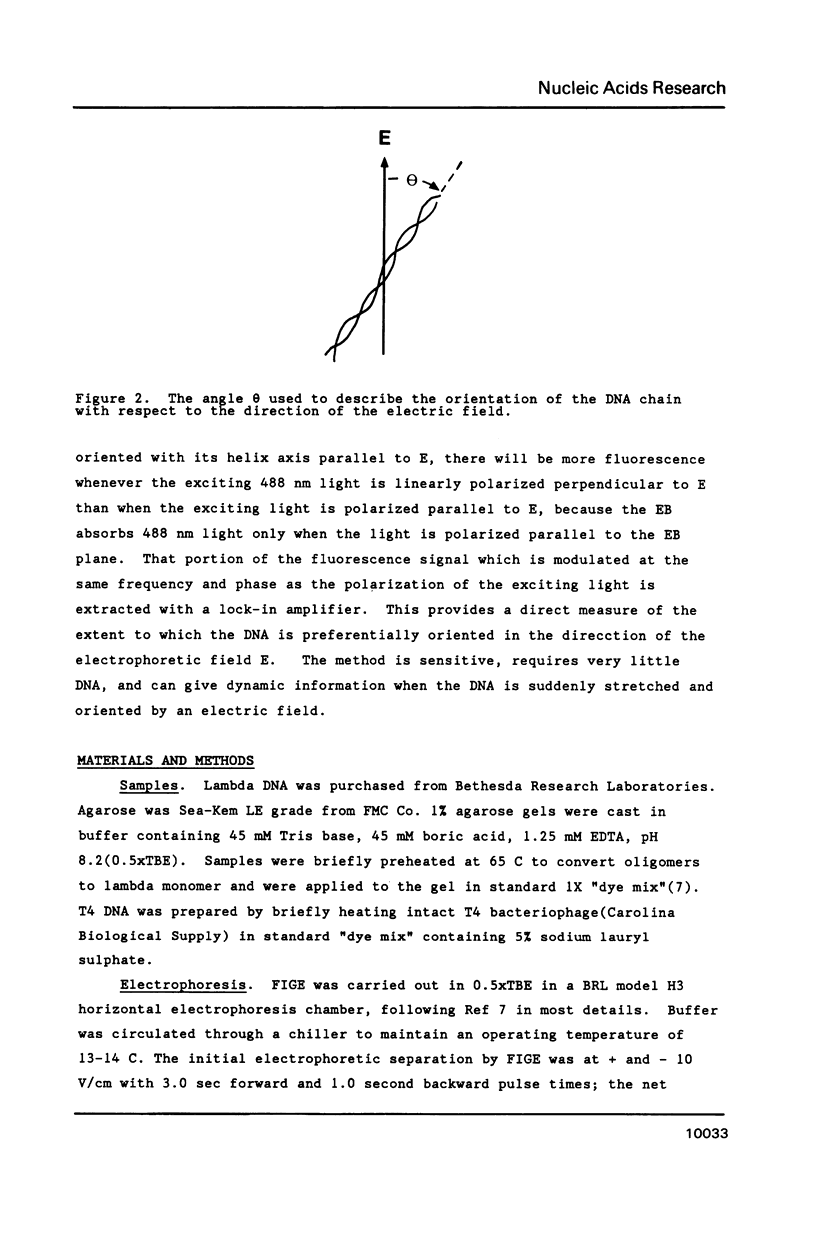
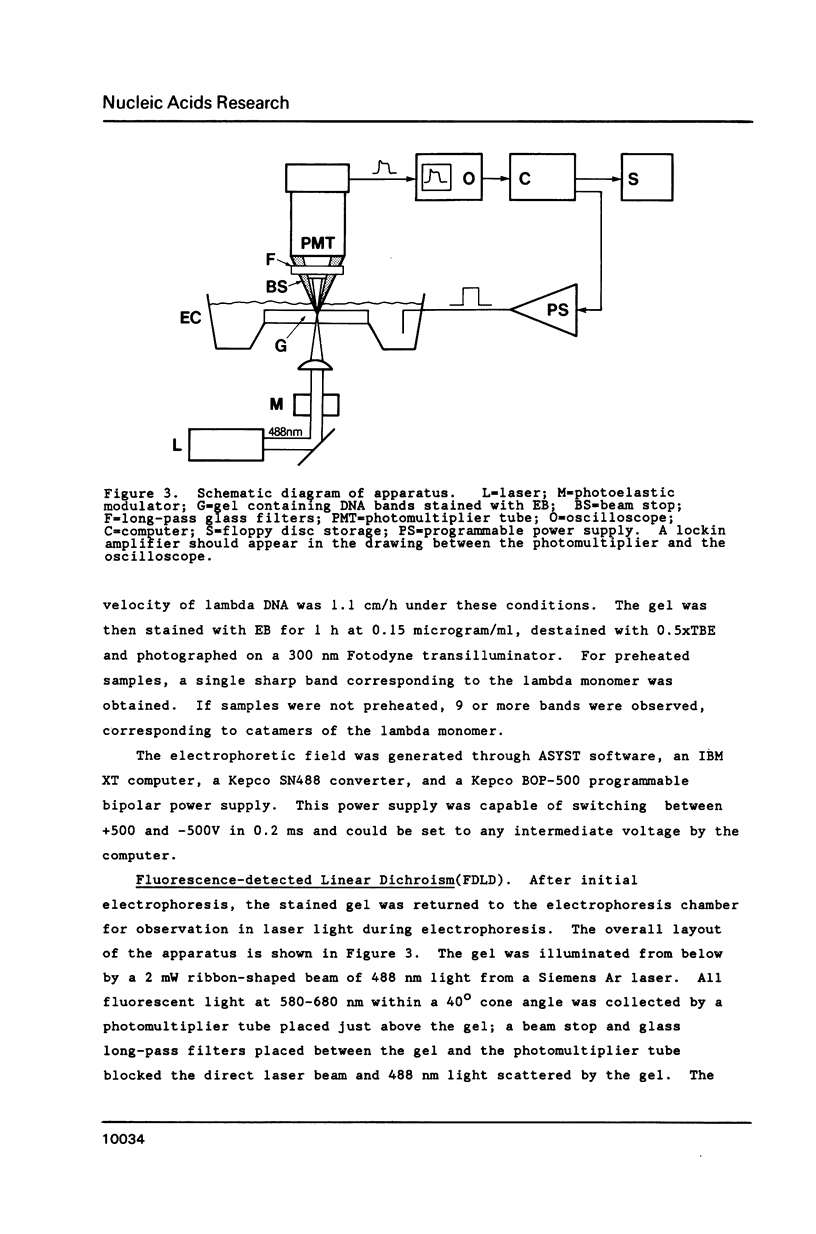
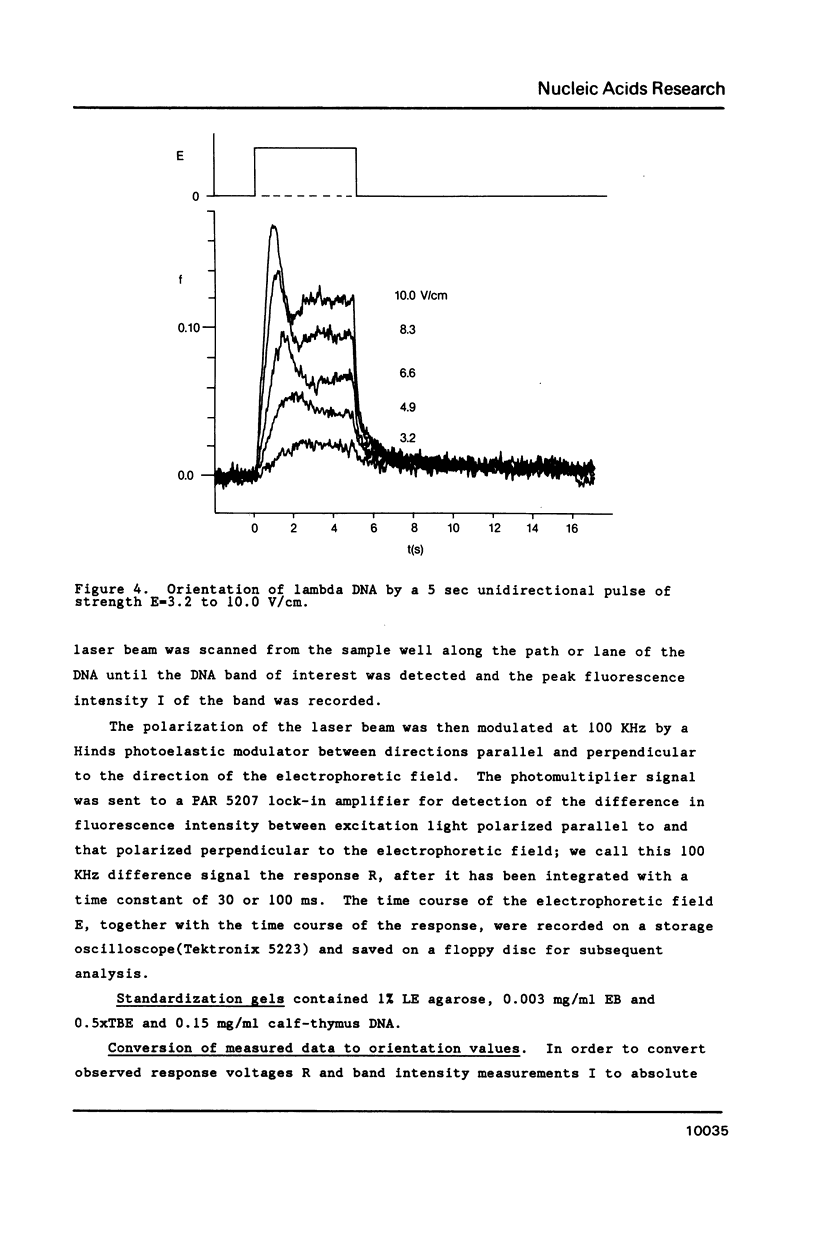
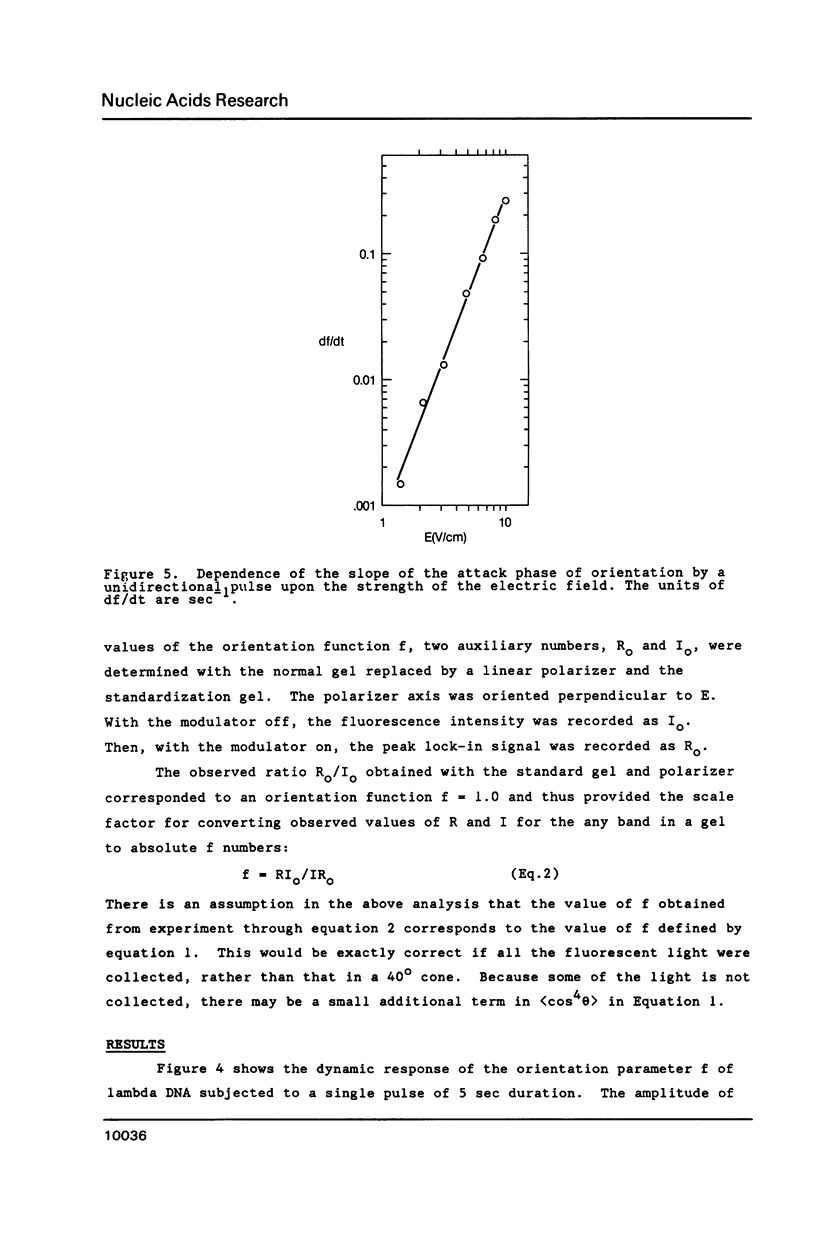
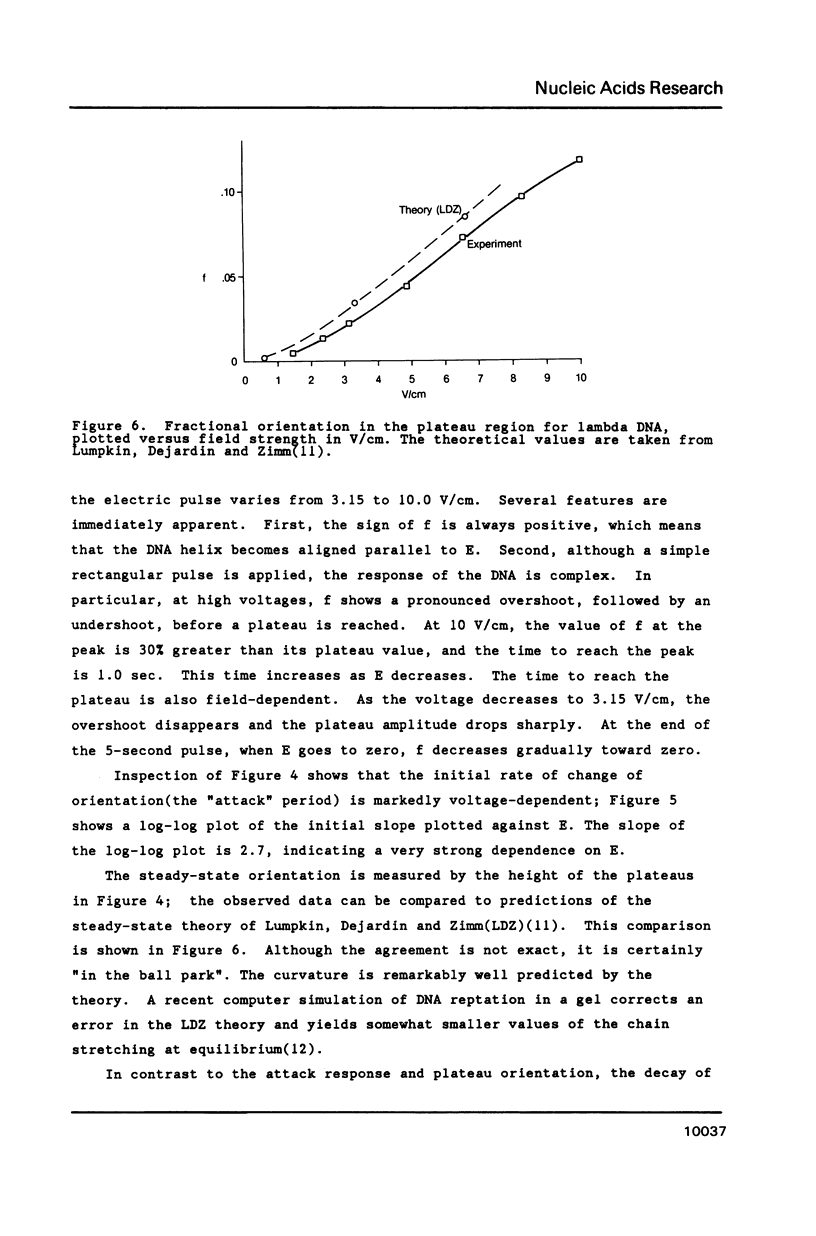
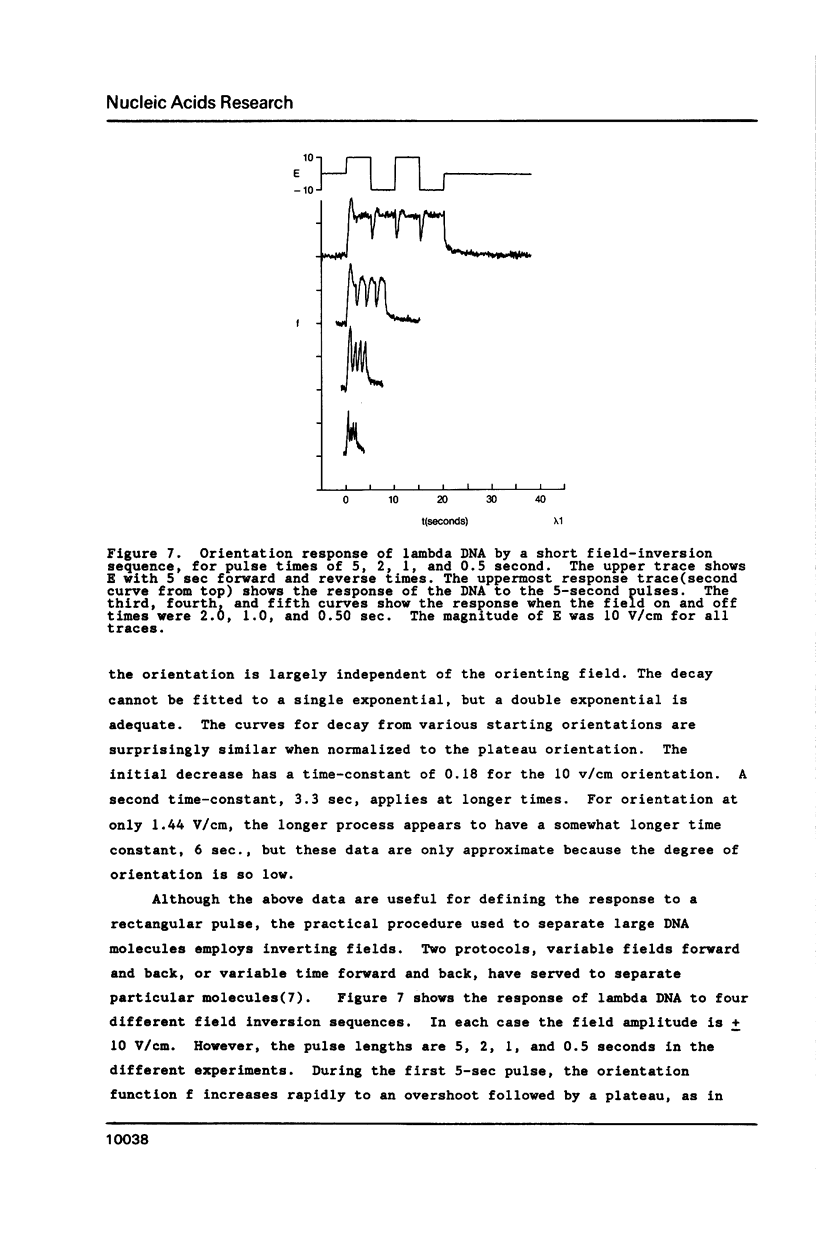
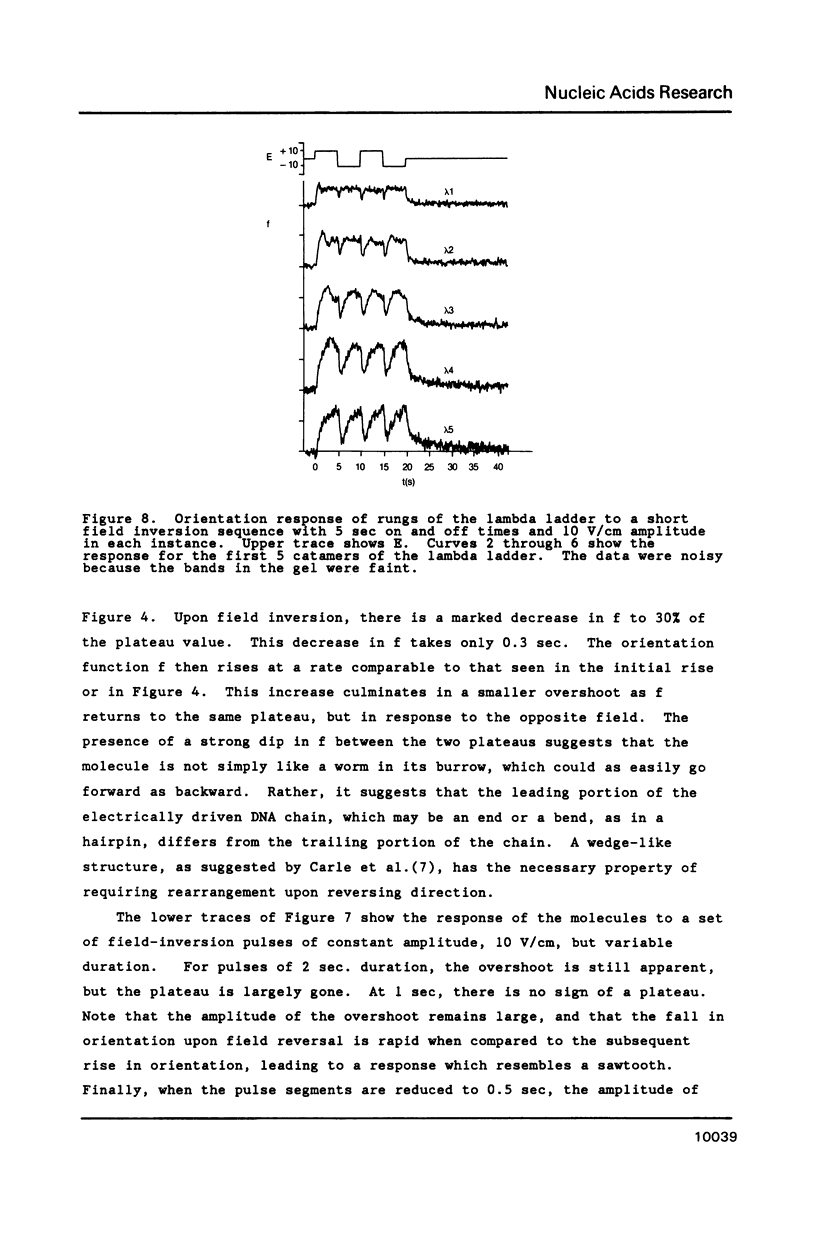
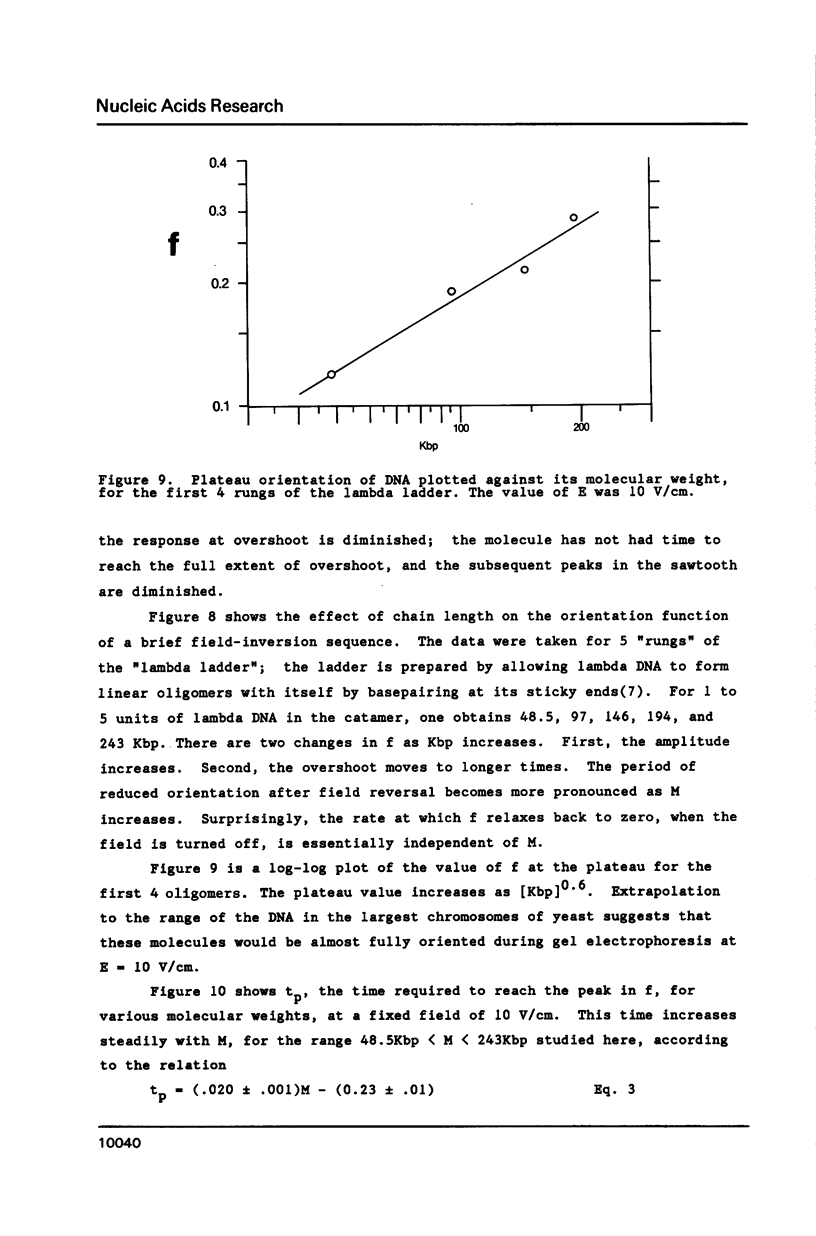
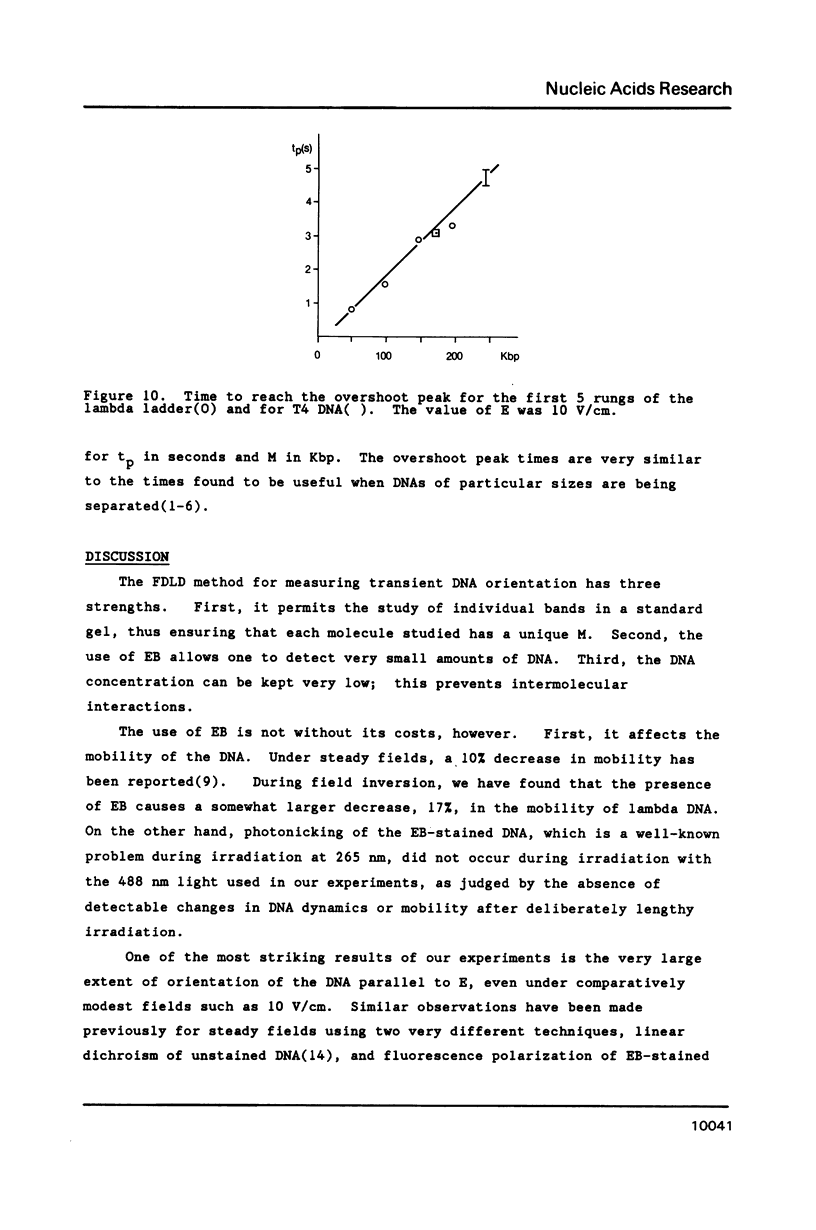
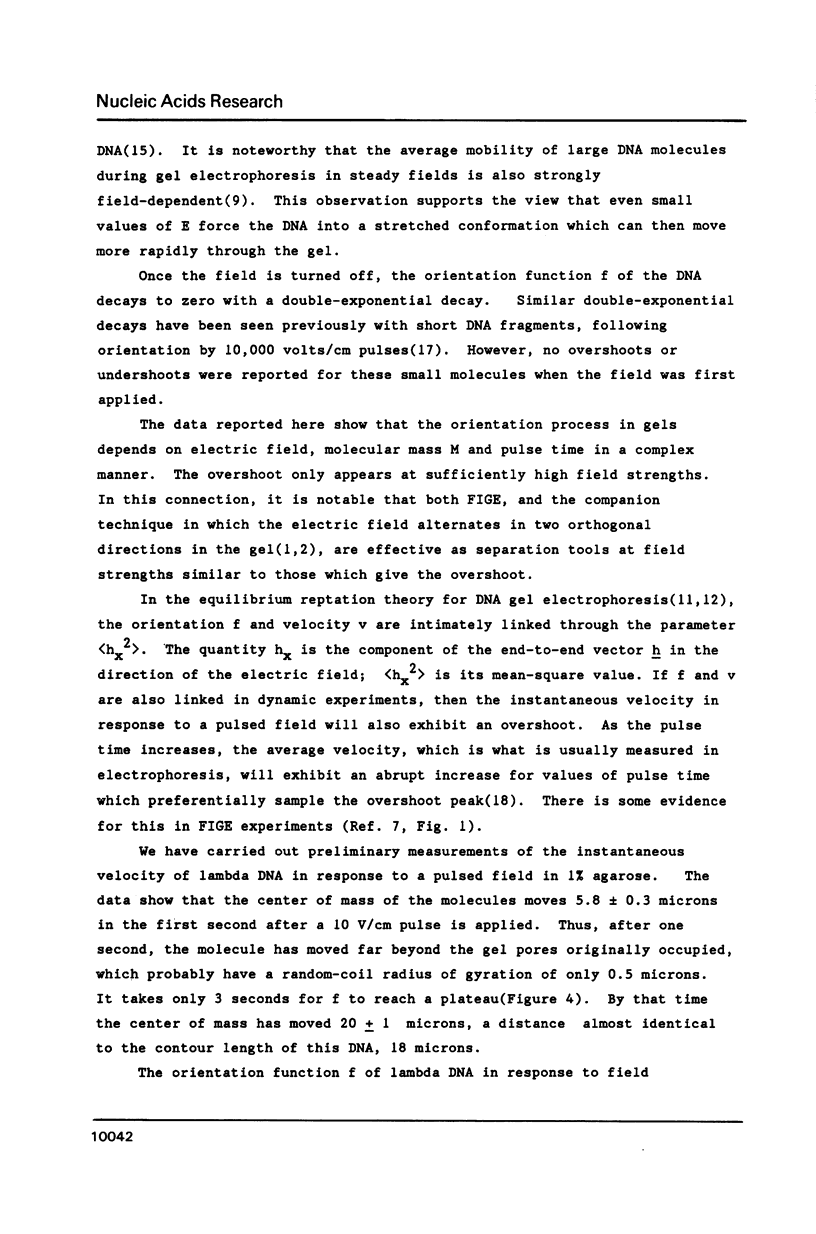
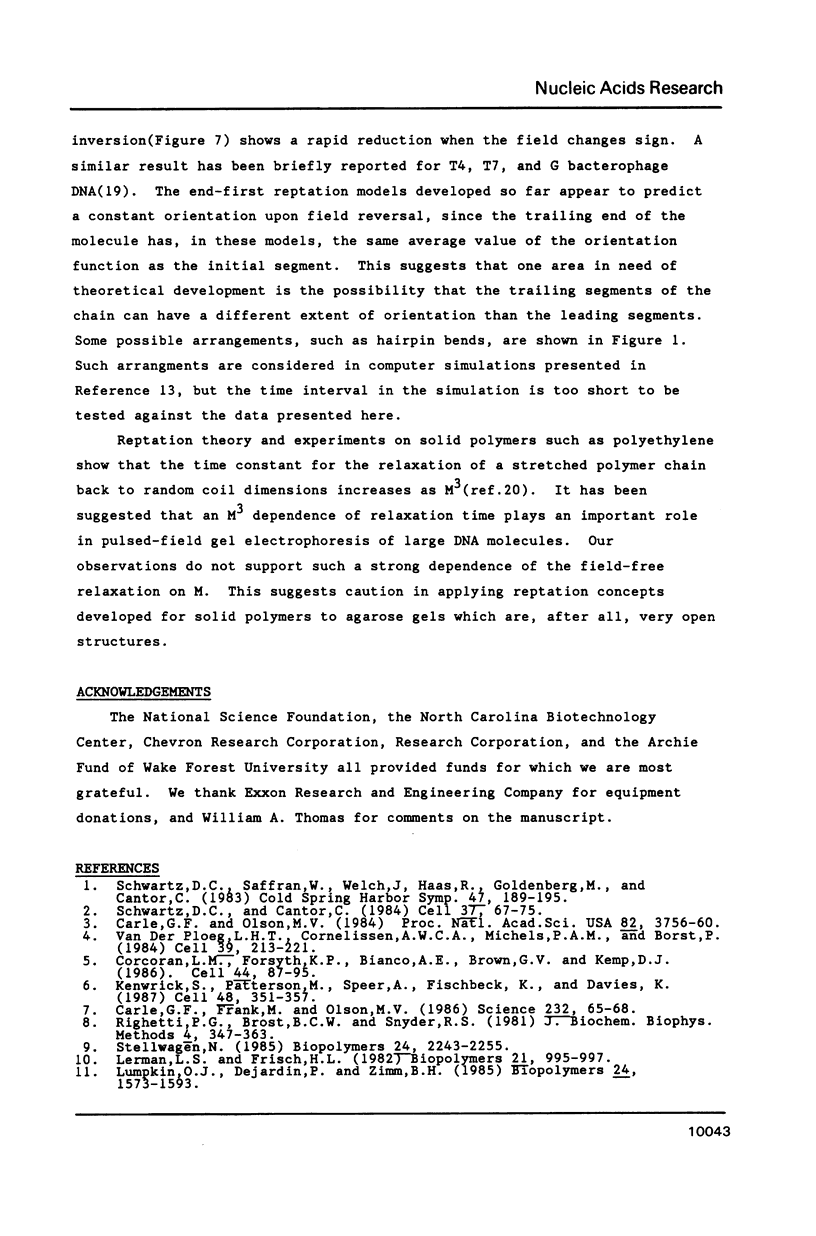
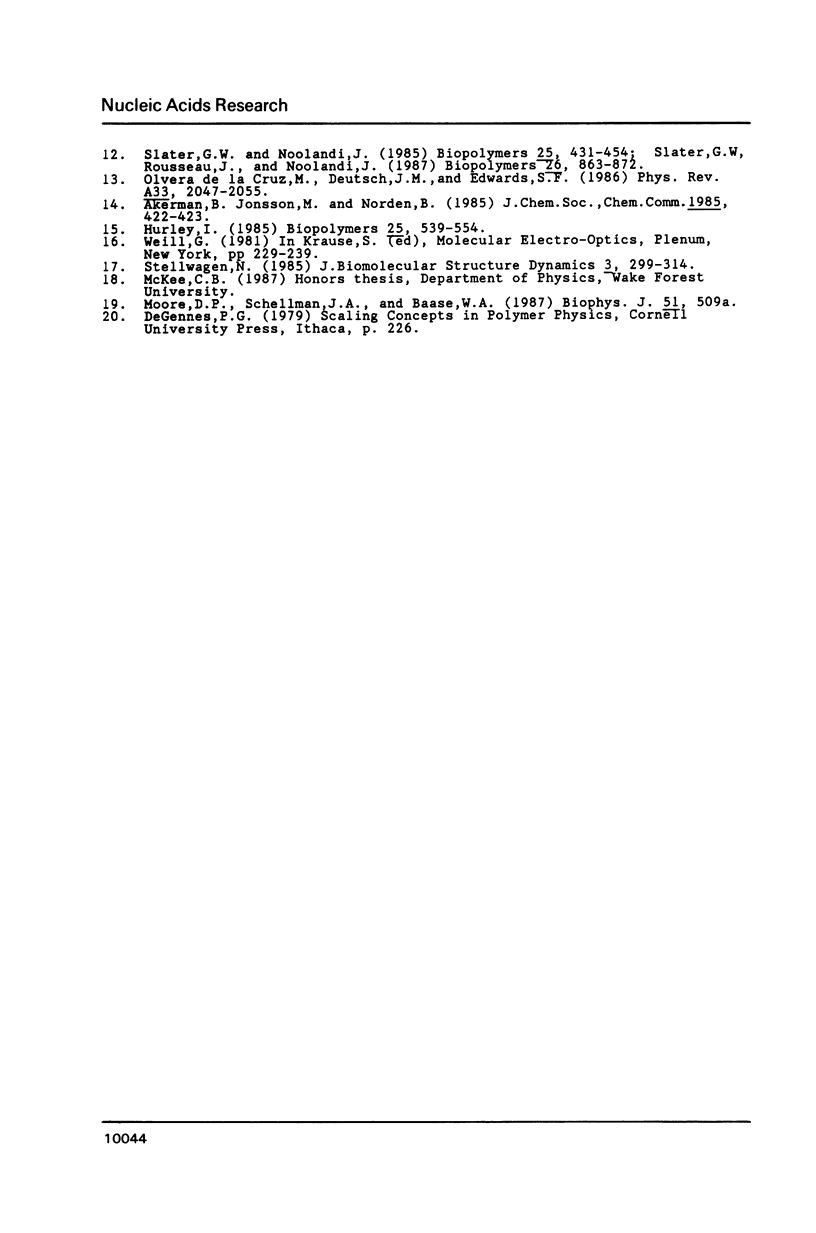
Selected References
These references are in PubMed. This may not be the complete list of references from this article.
- Carle G. F., Frank M., Olson M. V. Electrophoretic separations of large DNA molecules by periodic inversion of the electric field. Science. 1986 Apr 4;232(4746):65–68. doi: 10.1126/science.3952500. [DOI] [PubMed] [Google Scholar]
- Carle G. F., Olson M. V. An electrophoretic karyotype for yeast. Proc Natl Acad Sci U S A. 1985 Jun;82(11):3756–3760. doi: 10.1073/pnas.82.11.3756. [DOI] [PMC free article] [PubMed] [Google Scholar]
- Hurley I. DNA orientation during gel electrophoresis and its relation to electrophoretic mobility. Biopolymers. 1986 Apr;25(4):539–554. doi: 10.1002/bip.360250403. [DOI] [PubMed] [Google Scholar]
- Kenwrick S., Patterson M., Speer A., Fischbeck K., Davies K. Molecular analysis of the Duchenne muscular dystrophy region using pulsed field gel electrophoresis. Cell. 1987 Jan 30;48(2):351–357. doi: 10.1016/0092-8674(87)90438-7. [DOI] [PubMed] [Google Scholar]
- Lumpkin O. J., Déjardin P., Zimm B. H. Theory of gel electrophoresis of DNA. Biopolymers. 1985 Aug;24(8):1573–1593. doi: 10.1002/bip.360240812. [DOI] [PubMed] [Google Scholar]
- Olvera de la Cruz M, Deutsch JM, Edwards SF. Electrophoresis in strong fields. Phys Rev A Gen Phys. 1986 Mar;33(3):2047–2055. doi: 10.1103/physreva.33.2047. [DOI] [PubMed] [Google Scholar]
- Righetti P. G., Brost B. C., Snyder R. S. On the limiting pore size of hydrophilic gels for electrophoresis and isoelectric focusing. J Biochem Biophys Methods. 1981 Jun;4(5-6):347–363. doi: 10.1016/0165-022x(81)90075-0. [DOI] [PubMed] [Google Scholar]
- Schwartz D. C., Cantor C. R. Separation of yeast chromosome-sized DNAs by pulsed field gradient gel electrophoresis. Cell. 1984 May;37(1):67–75. doi: 10.1016/0092-8674(84)90301-5. [DOI] [PubMed] [Google Scholar]
- Schwartz D. C., Saffran W., Welsh J., Haas R., Goldenberg M., Cantor C. R. New techniques for purifying large DNAs and studying their properties and packaging. Cold Spring Harb Symp Quant Biol. 1983;47(Pt 1):189–195. doi: 10.1101/sqb.1983.047.01.024. [DOI] [PubMed] [Google Scholar]
- Slater G. W., Rousseau J., Noolandi J. On the stretching of DNA in the reptation theories of gel electrophoresis. Biopolymers. 1987 Jun;26(6):863–872. doi: 10.1002/bip.360260607. [DOI] [PubMed] [Google Scholar]
- Stellwagen N. C. Effect of the electric field on the apparent mobility of large DNA fragments in agarose gels. Biopolymers. 1985 Dec;24(12):2243–2255. doi: 10.1002/bip.360241207. [DOI] [PubMed] [Google Scholar]
- Stellwagen N. C. Orientation of DNA molecules in agarose gels by pulsed electric fields. J Biomol Struct Dyn. 1985 Oct;3(2):299–314. doi: 10.1080/07391102.1985.10508418. [DOI] [PubMed] [Google Scholar]


